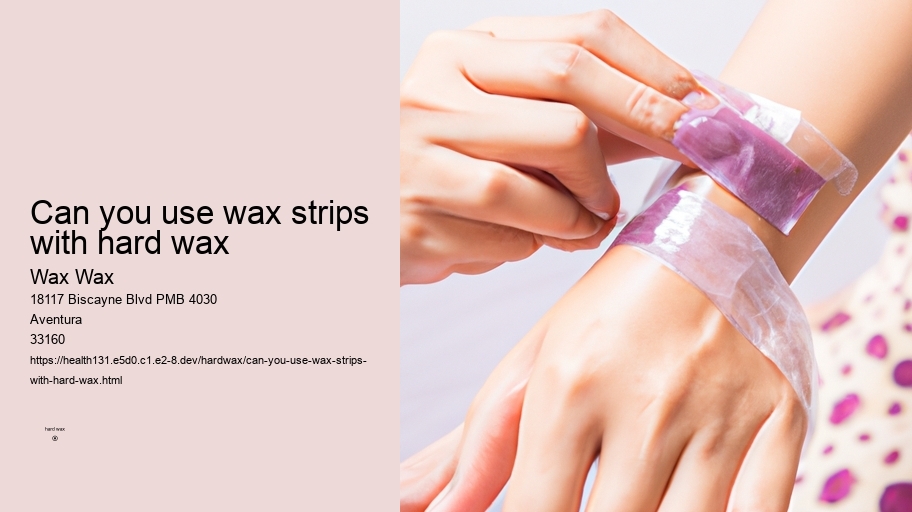

Find sources: "Waxing" news · newspapers · books · scholar · JSTOR ( April 2017 ) ( Learn how and when to remove this message )
Proper post-wax care is crucial to maintain smooth and healthy skin after a waxing session. Neglecting this step can lead to irritation, ingrown hairs, and other skin issues that can be uncomfortable (and unattractive). By following the right post-wax care routine, you can ensure that your skin stays soft and free from unwanted side effects!
Waxing is the process of hair removal from the root by using a covering of a sticky substance, such as wax, to adhere to body hair, and then removing this covering and pulling out the hair from the follicle. New hair will not grow back in the previously waxed area for four to six weeks, although some people will start to see regrowth in only a week due to some of their hair being on a different human hair growth cycle. Almost any area of the body can be waxed, including eyebrows , face, pubic hair (called bikini waxing or intimate waxing), legs, arms, back, abdomen, chest, knuckles, and feet. There are many types of waxing suitable for removing unwanted hair.
Get the best hard wax products from Wax Wax.Use calming serums or oils: Incorporating calming serums or oils into your skincare routine (can be beneficial) after waxing. These products can help reduce redness, inflammation, and sensitivity caused by hair removal. Simply apply a few drops of the serum or oil onto the affected areas and gently massage it into your skin for maximum effectiveness.
Potential for longer-lasting and smoother results
Waxing is a popular method for removing unwanted hair, but maintaining smooth skin in between waxing sessions is essential for optimal results and skin health. To achieve this, exfoliate regularly to prevent ingrown hairs and keep the skin soft. (Exfoliating two to three times a week can help in keeping your skin smooth) Additionally, moisturize daily to hydrate the skin and prolong the effects of waxing. hard wax temperature Proper skincare routines are crucial in between waxing appointments to ensure silky-smooth skin!
Avoid using any lotions or oils on the day of your waxing session as this can create a barrier between the wax and your skin, making it harder to remove hair effectively. wax kit with beads This can result in incomplete hair removal and irritation. Additionally, lotions and oils can make the skin slippery, leading to a less precise waxing process.
Types
Waxing is the process of hair removal from the root by using a covering of a sticky substance, such as wax, to adhere to body hair, and then removing this covering and pulling out the hair from the follicle. New hair will not grow back in the previously waxed area for four to six weeks, although some people will start to see regrowth in only a week due to some of their hair being on a different human hair growth cycle. Almost any area of the body can be waxed, including eyebrows , face, pubic hair (called bikini waxing or intimate waxing), legs, arms, back, abdomen, chest, knuckles, and feet. There are many types of waxing suitable for removing unwanted hair.
Factors that affect how long hair should be before waxing
While both hard and soft waxes can effectively remove most types of hair, hard wax is often preferred for coarse or stubborn hairs as it can grip shorter lengths more easily.
Hair needs to be a minimum length in order for the wax to effectively grab onto the hair and remove it from the root.
Absolutely, it is crucial to avoid sun exposure 24-48 hours before and after waxing as it can make your skin more sensitive and prone to irritation.
3. Is waxing less irritating to the skin compared to shaving?
Types

Wearing loose clothing can help to avoid irritation on your freshly waxed skin. Tight clothes can rub against the skin and cause redness or discomfort, so opt for breathable fabrics that won't stick to the skin. This will allow your skin to breathe and heal properly after a waxing session!
Waxing a woman's armpits .
Improper technique can lead to ineffective results, whether waxing is done at home or by a professional. In both cases, there are advantages and disadvantages to consider. When doing DIY waxing, it is important to apply the wax in the direction of hair growth and remove it against the hair growth for best results. If this step is not done correctly, the hair may not be fully removed from the root, leading to faster regrowth. Additionally, improper temperature control of the wax can result in burns or skin damage (!). On the other hand, professional estheticians are trained to use proper techniques and ensure effective hair removal with minimal discomfort. However, some individuals may find professional waxing services expensive compared to purchasing at-home wax kits. As a round up, mastering the correct technique is crucial for achieving successful results in both DIY and professional waxing processes.
Stay mindful of your breath throughout the waxing session to maintain a sense of control and composure. Focusing on your breathing can help you stay present in the moment and prevent yourself from tensing up or panicking during the process (especially if it's a sensitive area being waxed). no tweeze hard wax hair remover Remember that relaxation is key to minimizing pain, so try to keep steady, rhythmic breaths going even when you feel discomfort.
Moisturize the skin: (It's) crucial to keep the skin moisturized after a bikini wax to prevent dryness and irritation. Use a gentle, fragrance-free lotion or oil to hydrate the area.
To determine if your hair is the right length for waxing, follow these tips: